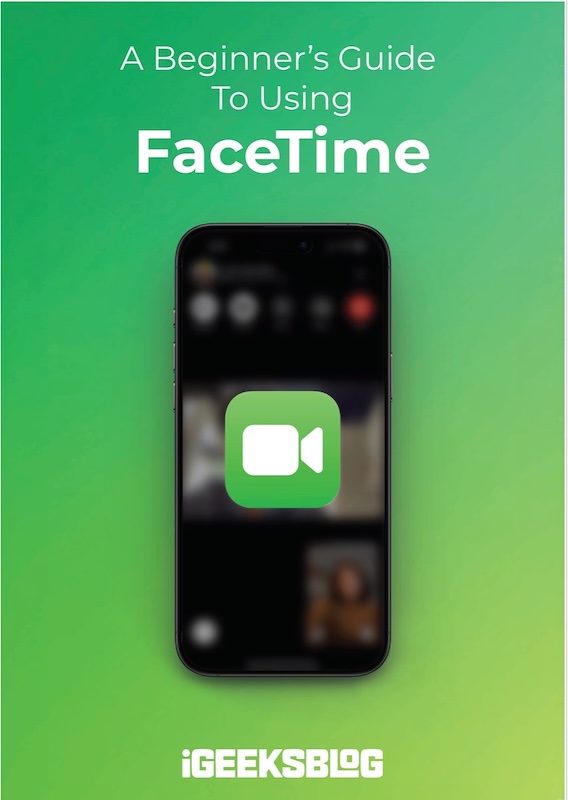
FaceTime Like a Pro
Get our exclusive Ultimate FaceTime Guide 📚 — absolutely FREE when you sign up for our newsletter below.

FaceTime Like a Pro
Get our exclusive Ultimate FaceTime Guide 📚 — absolutely FREE when you sign up for our newsletter below.
Affinity just went free under Canva. Can it really replace Photoshop? We tested both to see which design app wins in 2025.
Affinity just did something bold. Canva’s newly acquired design suite has merged all three of its apps: Affinity Photo, Affinity Designer, and Affinity Publisher into one unified platform. And the best part? It’s completely free. You can now edit photos, design graphics, and lay out documents inside a single app that feels professional, fast, and surprisingly bug-free.
No wonder everyone’s asking: is this the time to ditch Photoshop and its expensive monthly plan? I wondered the same. So I spent a week using both. Here’s what I found.
For 90% of everyday edits and design work, Affinity gets the job done. It feels fast, polished, and intuitive. You can retouch photos, design posters, or even prepare print layouts without hitting a paywall. But Photoshop still leads when it comes to:
Still, for anyone who doesn’t need every pro-level automation, Affinity now feels like a serious Photoshop replacement.
Affinity’s biggest change is its all-in-one interface. The app has three “studios” you can switch between: Vector (for illustration), Pixel (for photo editing), and Layout (for publishing). It’s like getting Photoshop, Illustrator, and InDesign combined.
Each studio shares the same smooth interface. Switching between vector graphics and raster edits feels instant, no exporting, no lag. Even tools like object selection, inpainting (content-aware remove), and layer masks feel familiar if you’ve used Photoshop before. And just like Photoshop, it is also layered based editing if you are wondering.

Photoshop, meanwhile, continues to expand its AI lineup. Adobe’s Firefly, Gemini, and Flux models now power things like smarter background removal, text-based editing, and the new Harmonize tool that matches lighting across images. Affinity also has Canva AI, however, it’s no close to what Photoshop is offering right now.
So if you work does not revolve around using these smart AI tools, your switch to Affinity will be smooth. And I would argue, few features like refining edges with brush, etc are actually better on Affinity than on Photoshop.
Small differences matter when you’re fast at Photoshop. Here are the ones that may trip you and how to adjust.
This is where Affinity shines. Free tools like GIMP or Krita often feel cluttered or confusing. Affinity, in contrast, feels modern and easy to grasp.
Every slider and option is clear, and the workspace can be customized to match Photoshop’s layout almost perfectly. Even the default layout is pretty much close too.

Even advanced tools like gradients, clipping masks, and path editing are logically organized. The live preview on tools like the shape builder and vector brushes feels responsive and immediate.
Photoshop still wins in terms of depth. For example, if you’re doing 3D textures, advanced retouching, or massive batch editing. But for anyone working on web content, thumbnails, or social media designs, Affinity feels lighter and faster.
In real use, Affinity feels snappy. I opened large RAW files and layered PSDs without slowdowns. The object selection worked nearly as fast as Photoshop’s AI-based one, and basic brushes and filters responded instantly. The app runs fully offline after a one-time Canva login, which means no cloud dependencies.
Photoshop is still smoother with high-end tasks, especially AI generation, color matching, or when using hardware acceleration on GPUs. But if you’re editing on a laptop or integrated graphics, Affinity’s performance feels more optimized and lighter.
Here’s the real shocker: Affinity is completely free. You just need a Canva account to activate it. All the editing tools, export options, and vector/pixel/layout studios are included. Only certain AI features like depth maps, colorization, and generative edit require Canva Premium ($15/month).
Photoshop, in contrast, starts at $22.99/month for just one app or $70/month for the full Creative Cloud suite. Even with discounts, you’re tied to a yearly plan, and canceling early costs extra.
If you only need Photoshop’s generative fill occasionally, Affinity’s model is far more flexible. You can work free all year, then activate Canva Premium for a month when you need AI tools.
Affinity can open and export PSD files, so you can move your old Photoshop projects over. It supports both Windows and macOS, and an iPad version is coming soon. The only missing piece? Linux support, which Adobe also lacks. For now, Linux users have to rely on Wine or virtualization.
Photoshop still benefits from tight integration with Adobe’s apps, Lightroom, Illustrator, Premiere Pro, and Express. That ecosystem remains valuable for teams and pros working across media types.
After a week with both, I’m convinced: Affinity finally feels like a real Photoshop alternative. It’s not perfect, but it’s close enough for almost everyone who isn’t working in large-scale professional environments. It’s fast, clean, and capable. And the fact that it’s free makes it almost impossible to ignore.
Photoshop will always be the industry giant. But if you’re tired of subscriptions and just want to create, edit, and design without limits, Affinity is the best free tool you can download right now.
Related articles worth reading: